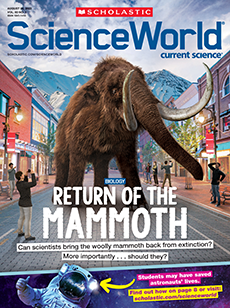In New York City, students from Middle School 50 (MS 50) gather at a park overlooking the waters that flow into New York Harbor. These sixth-graders aren’t gazing at passing boats or the Manhattan skyline. Instead, they’re concerned with what’s happening beneath the water’s surface.
A student pulls a rope hanging over the park’s railing, hoisting up a cage that had been submerged in the harbor. Inside, young oysters are growing. The students use adjustable tools called calipers to measure the growth of the mollusks. These animals’ soft bodies are protected inside closed shells.
In New York City, students from Middle School 50 (MS 50) gather at a park. They look out over the waters flowing into New York Harbor. These sixth-graders aren’t looking at passing boats or the Manhattan skyline. Instead, they’re concerned with what’s happening under the water.
A rope hangs over the park’s railing. It’s attached to an underwater cage. A student grabs the rope and pulls up the cage. Inside, young oysters are growing. The students use adjustable tools called calipers to measure the growth of the mollusks. These animals have soft bodies inside closed shells.
